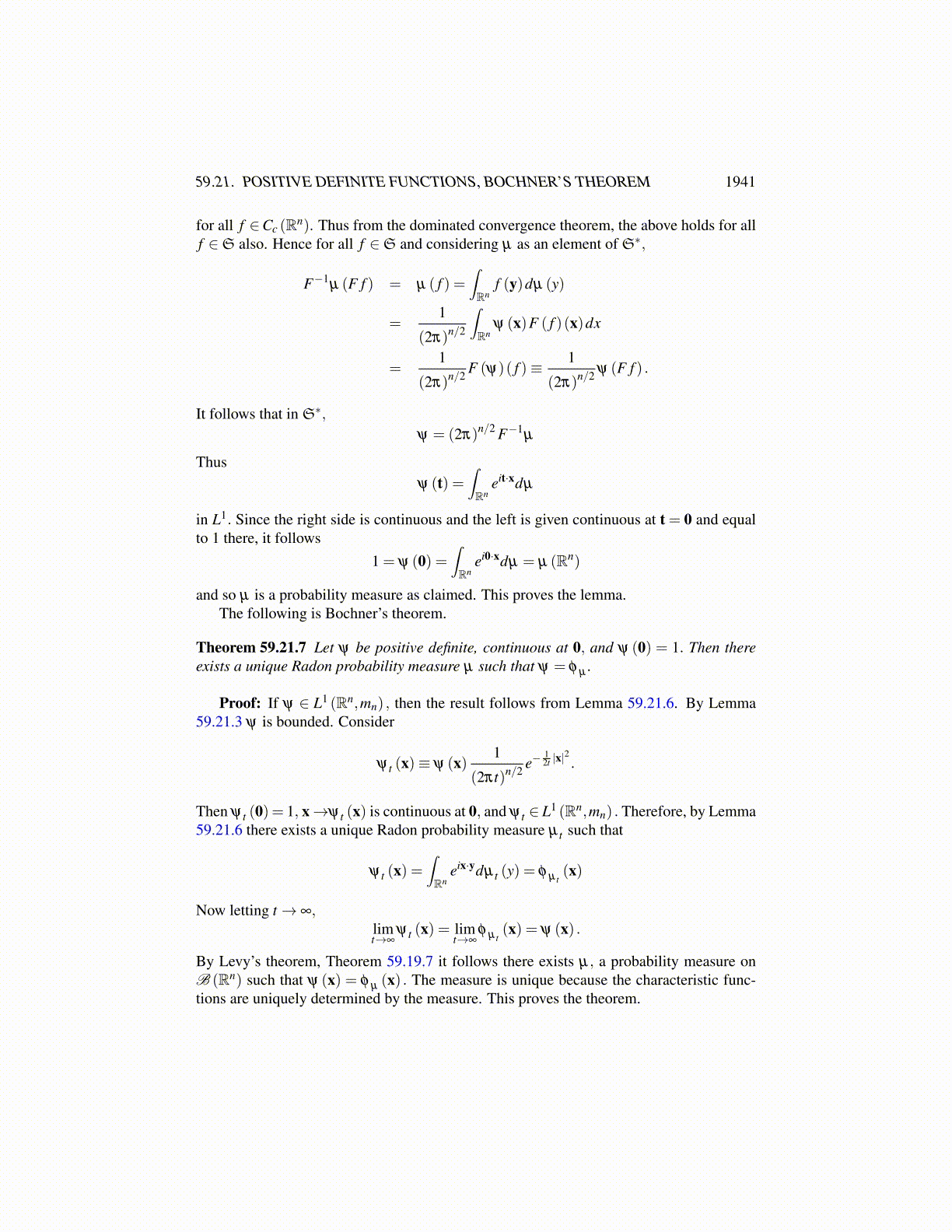
59.21. POSITIVE DEFINITE FUNCTIONS, BOCHNER’S THEOREM 1941
The integrand is of the formβ∗
1...1
β
∗
1...1
≥ 0
because it is just a complex number times its conjugate.Thus every characteristic function is continuous, equals 1 at 0, and is positive definite.
Bochner’s theorem goes the other direction.To begin with, suppose µ is a finite measure on B (Rn) . Then for S the Schwartz
class, µ can be considered to be in the space of linear transformations defined on S, S∗ asfollows.
µ ( f )≡∫
f dµ.
Recall F−1 (µ) is defined as
F−1 (µ)( f )≡ µ(F−1 f
)=∫Rn
F−1 f dµ
=1
(2π)n/2
∫Rn
∫Rn
eix·y f (y)dydµ
=∫Rn
(1
(2π)n/2
∫Rn
eix·ydµ
)f (y)dy
and so F−1 (µ) is the bounded continuous function
y→ 1
(2π)n/2
∫Rn
eix·ydµ.
Now the following lemma has the main ideas for Bochner’s theorem.
Lemma 59.21.6 Suppose ψ (t) is positive definite, t→ ψ (t) is in L1 (Rn,mn) where mnis Lebesgue measure, ψ (0) = 1, and ψ is continuous at 0. Then there exists a uniqueprobability measure, µ defined on the Borel sets of Rn such that
φ µ (t) = ψ (t) .
Proof: If the conclusion is true, then
ψ (t) =∫Rn
eit·xdµ (x) = (2π)n/2 F−1 (µ)(t) .
Recall that µ ∈S∗, the algebraic dual of S . Therefore, in S∗,
1
(2π)n/2 F (ψ) = µ.